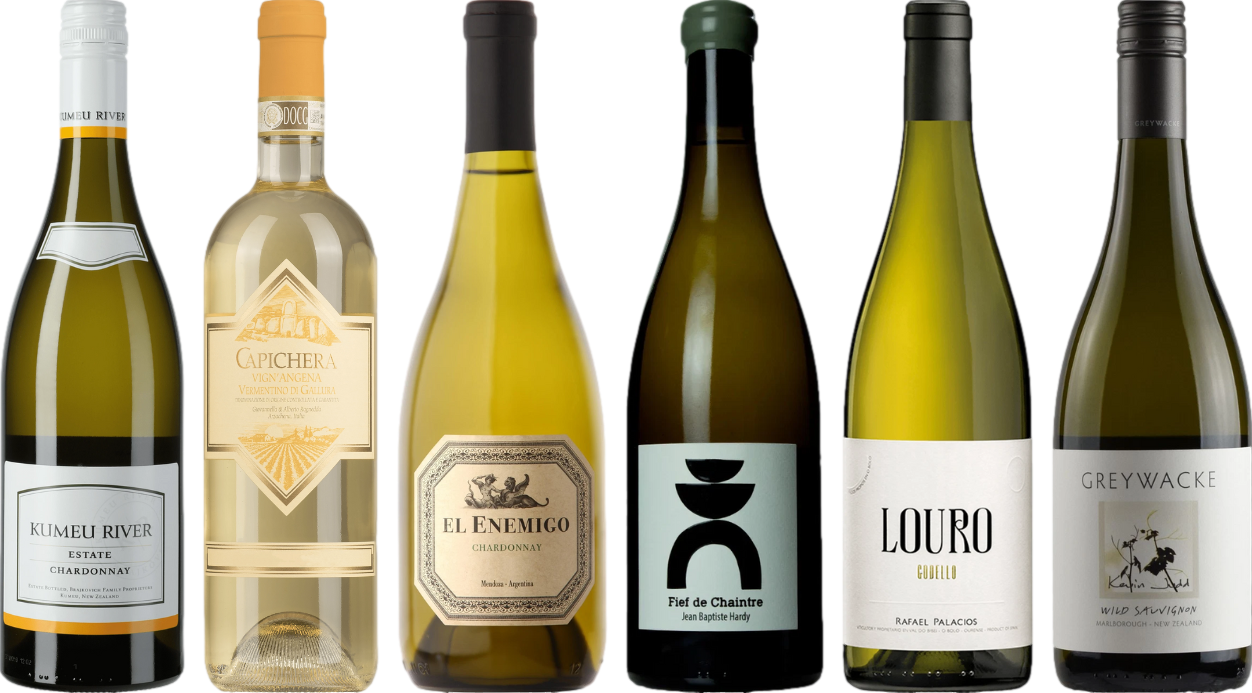



If you seek refreshing and indulgent beverages, consider exploring Moscato. This aromatic gem often presents notes of peach and orange blossom, making it a delightful choice for warm evenings or pairing with spicy dishes. Look for options from regions like Italy, where the best examples truly shine.
Another excellent selection is Riesling, particularly those from Germany’s Mosel region. These offerings range from off-dry to lusciously sweet, showcasing flavors of green apple, honey, and floral accents. A well-chilled Riesling complements various cuisines, especially Asian fare.
For a unique experience, try Gewürztraminer. Known for its exotic bouquet, this variety often exhibits lychee, rose petal, and ginger notes. A sweet version pairs beautifully with rich cheeses or Asian-inspired dishes, enhancing the overall dining experience.
Lastly, consider dessert wines like Sauternes or Ice Wine. Sauternes, hailing from Bordeaux, is renowned for its complexity and richness, while Ice Wine, made from grapes frozen on the vine, offers a concentrated sweetness. Both provide a luxurious finish to any meal or can stand alone as a delightful treat.
Sweet Varieties of Light-Colored Vintages
Riesling stands out for its luscious sweetness, often exhibiting notes of peach, apricot, and honey. Look for those labeled as “late harvest” or “Auslese” for enhanced sweetness.
Gewürztraminer is another option, renowned for its aromatic profile and rich, fruity flavors. Seek out examples from Alsace or Germany for optimal sweetness.
Muscat, particularly Muscat of Alexandria, delivers a sweet and floral experience. The dessert-style versions are especially delightful paired with spicy dishes or fruit-based desserts.
Vouvray, made from Chenin Blanc grapes, can range from dry to sweet. Opt for “Demi-Sec” or “Moelleux” classifications for a delightful sweetness that complements savory foods.
Tokaji, a Hungarian gem, is crafted using botrytized grapes, resulting in a rich, honeyed sweetness balanced by acidity. This style is perfect for pairing with rich cheeses.
| Variety | Region | Flavor Profile |
|---|---|---|
| Riesling | Germany, Alsace | Peach, Apricot, Honey |
| Gewürztraminer | Alsace, Germany | Lychee, Rose, Spice |
| Muscat | Various | Floral, Tropical Fruits |
| Vouvray | Loire Valley | Apple, Honey, Floral |
| Tokaji | Hungary | Honey, Apricot, Nut |
These selections provide a wonderful spectrum of sweetness and complexity, making them ideal for various pairings and occasions. Enjoy exploring these rich flavors!
Understanding Sweetness Levels in White Wines
For those seeking delightful options, consider Riesling and Moscato. Both varieties are renowned for their sugary profiles, offering a perfect balance of acidity and sweetness. Riesling, particularly from regions like Germany, often showcases a range of sweetness levels, from dry to lusciously sweet, making it versatile for pairing with various dishes.
Measuring Sweetness
Sweetness in these beverages is quantified by the residual sugar (RS) content. Typically, wines with more than 30 grams of RS per liter are classified as sweet. To experience this firsthand, try a late harvest version of Riesling. These wines are harvested later in the season, allowing grapes to concentrate their sugars, resulting in a rich and flavorful sip.
Exploring Other Options
Consider Sauternes and Tokaji for an elevated experience. These dessert wines are crafted from grapes affected by noble rot, which intensifies their sweetness and complexity. Pair them with rich foods like foie gras or blue cheese for an unforgettable tasting experience. For a modern twist, check out the best aps c sensor mirrorless camera to capture those beautiful moments during your wine tasting adventures.
Understanding the sweetness levels enhances appreciation and enjoyment, allowing for thoughtful selections that elevate both food and wine pairings.
Popular Sweet White Wine Varieties
Riesling stands out as a go-to choice for lovers of dessert-like sips. Its natural acidity balances the sweetness, delivering notes of peach, apricot, and honey. Look for options from Germany, particularly those labeled as Spätlese or Auslese for a richer experience.
Another delightful selection is Moscato, renowned for its fragrant profile and lower alcohol content. This Italian gem often features flavors of orange blossom and ripe melon, making it a perfect companion for spicy dishes or light desserts.
Gewürztraminer, with its aromatic intensity, offers a unique twist. Expect lychee, rose petal, and ginger notes, which can complement Asian cuisine beautifully. Seek bottles from Alsace for the most expressive versions.
Late Harvest Sauvignon Blanc provides another intriguing option. The grapes are picked later in the season, resulting in concentrated flavors of citrus and tropical fruits. Pair it with creamy cheeses or fruit-based desserts for a delightful match.
Lastly, consider Sauternes, a classic French delight. This luxurious pour boasts complex flavors of caramel, apricot, and honey, often served with foie gras or blue cheese. Look for bottles from Château d’Yquem for a truly exceptional experience.
How to Identify Sweetness on Wine Labels
To determine the level of sweetness in a bottle, check for specific terms on the label. Terms like “late harvest,” “dessert,” or “ice wine” indicate higher sugar content. Additionally, look for words such as “off-dry” or “semi-sweet,” which suggest a moderate sweetness level.
Key Indicators
- Alcohol Content: Generally, wines with lower alcohol levels (around 8-10%) often have higher residual sugar, suggesting sweetness.
- Region and Variety: Certain regions are known for producing sweeter options. For instance, wines from Alsace or the Mosel region typically have a reputation for sweetness.
- Back Label Information: Many producers include tasting notes or sweetness indicators on the back label, which can be helpful.
Additional Tips
- Familiarize yourself with varietals known for their sweeter profiles, such as Riesling, Gewürztraminer, and Moscato.
- Ask for recommendations at your local retailer; staff can often provide insights into which bottles are sweeter.
- Participate in tastings to develop your palate and recognize sweetness levels more effectively.
Serving Temperature for Sweet White Wines
Serve these delightful drinks chilled, ideally between 45°F to 50°F (7°C to 10°C). This temperature range enhances their aromatic profile and balances the sweetness, allowing the complexity of flavors to shine.
If you’re enjoying a dessert variety, a slightly warmer temperature, around 50°F to 55°F (10°C to 13°C), can enhance the richness and provide a more rounded experience. Experiment with these ranges to discover what suits your palate best.
Always use a wine cooler or an ice bucket for effective chilling before serving. Avoid placing bottles directly in the freezer, as rapid cooling can impact the taste and texture negatively.
For optimal enjoyment, allow the bottle to sit for a few minutes after pouring. This small wait can significantly improve the tasting experience, as the wine gradually warms to its ideal drinking temperature.
Pairing these selections with appropriate foods can also enhance the overall experience. Consider serving them alongside cheeses, pastries, or fruit-based desserts to complement the inherent sweetness.
Food Pairings for Sweet White Wines
Pairing luscious, aromatic selections with food enhances the dining experience. Here are some specific recommendations:
- Spicy Dishes: Sweet whites complement spicy Asian cuisines, like Thai green curry or Szechuan stir-fry. The sweetness balances heat effectively.
- Fruit-Based Desserts: Tarts, sorbets, or fruit salads benefit from a glass of late-harvest Riesling or Moscato, which mirror the dish’s sweetness.
- Cheeses: Blue cheese or creamy Brie pairs beautifully with sweeter options. The contrast in flavors creates a compelling combination.
- Foie Gras: A classic match with Sauternes, the richness of foie gras finds harmony with the wine’s honeyed notes.
- Charcuterie: Sweet selections enhance cured meats, especially those with a hint of spice. Try a Gewürztraminer for a delightful pairing.
Experimentation is key. Each palate is unique, so consider personal preferences when pairing. Enjoy the exploration!
Regions Known for Sweet White Wine Production
Germany stands out as a premier locale for luscious, dessert-like offerings. The Mosel, Rheingau, and Pfalz regions are particularly renowned for their Rieslings, often showcasing a spectrum of sweetness levels, from kabinett to auslese. The unique slate soils and cool climate create ideal conditions for late harvest and noble rot, enhancing the sweetness and complexity of the grapes.
France also boasts distinguished areas, especially the Loire Valley, known for its exquisite late-harvest Chenin Blancs from Vouvray. Sauternes, located in Bordeaux, is famous for its botrytized Semillon and Sauvignon Blanc, delivering rich and honeyed flavors that are cherished worldwide. These regions utilize specific microclimates and vineyard practices that promote the development of sweetness in their varietals.
Italy’s Tuscany and Veneto regions contribute to the global sweet wine scene with Vin Santo and Recioto, respectively. Vin Santo, often made from dried grapes, offers a rich, nutty flavor profile, while Recioto, crafted from partially dried grapes, provides a velvety texture and luscious sweetness.
Australia, particularly the Barossa Valley, excels in producing fortified Muscats and luscious Semillons, often characterized by tropical fruit flavors and rich mouthfeel. The warm climate aids in achieving high sugar concentration, resulting in delightful dessert wines.
Finally, the United States has made a name in this category as well, with California’s Napa Valley producing notable late-harvest and botrytized wines, particularly from Sauvignon Blanc and Chardonnay. The warm days and cool nights help develop the grapes’ natural sugars, leading to elegantly sweet profiles.









